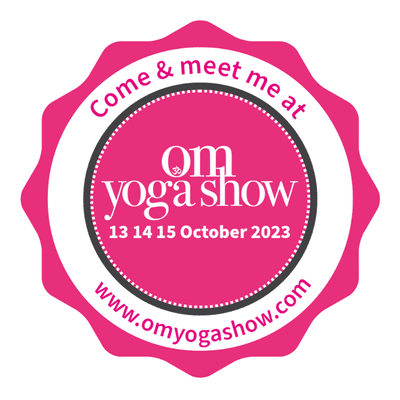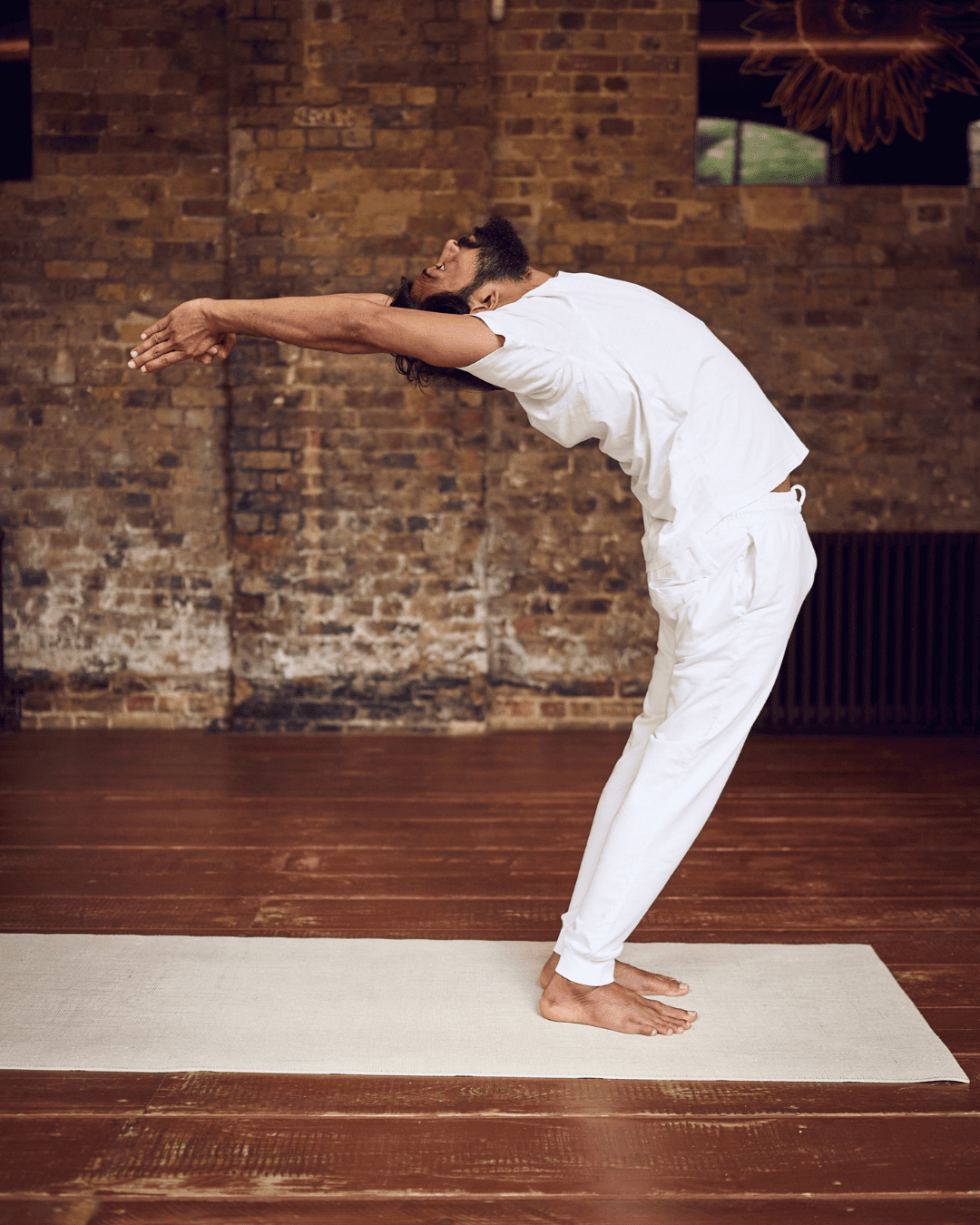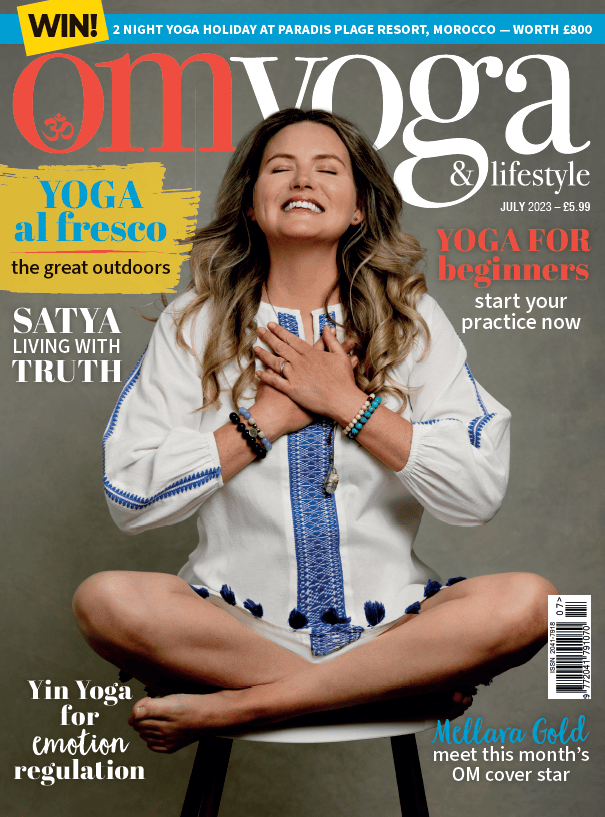MAN ON THE MAT with Ravi Dixit
Hasta Uttanasana (Raised Arms Pose)
Hasta Uttanasana, a standing posture, is the second and eleventh pose of the Surya Namaskara sequence (sun salutation). In Sanskrit, ‘hasta’ refers to the hands and ‘uttana’ means upward. In this asana, arms rise up in salute to the sun, opening the heart to receiving its energy.
Benefits
- Although this looks like a simple pose, it’s an important posture to warm up the body before a more advanced asana practice.
- Hasta Uttanasana strengthens the muscles that support the spine, gives a nice stretch to the abdomen and opens the chest to create space for the heart and lungs to allow for deep and full breaths.
- Many of us spend hours working on computers and phones, creating a habit of rounding the shoulders and upper back. This asana can help as a counterpose. It stretches out areas where many of us hold tension, like the upper back, head and shoulders. Also, when we move our spine in a way that it’s not used to, we boost our system with fresh blood circulation and prana energy.
- Lengthens and strengthens the back muscles and spine.
- Stretches the arms, shoulders and muscles of the abdomen.
- Expands the chest and the rib cage, improving lung capacity and oxygen flow.
- Improves digestion and supports a healthy kidney function.
Mistakes
- Bending the knees: the knees should be straight.
- Putting too much pressure on the lower back. When leaning back, start gently and avoid hanging into your lower back as this will compress the spine and can cause back pain.
- Bending the elbows and not expanding the chest. Keep the elbows straight, open the chest and don’t shrug the shoulders up, but actively draw them down.
Tips
- Before you stretch up, focus on grounding your feet first. Press the toes onto the ground to find stability before you lean back. This will help to keep your balance.
- Don’t lean too far backwards at first. Focus on the correct alignment in the upward stretch and once you feel stable and comfortable, lean back a few centimetres at the same time.
- This pose is a great practice to start with when you want to learn standing wheel pose (Urdhva Dhanurasana) or any other advanced backbends.
Awareness
- Spiritual awareness is on the heart centre, releasing emotions and opening the heart to receiving.
- Physical awareness is on the whole body, with extra awareness towards the feet and hands.
Ravi Dixit is an Indian yoga teacher living in London, passionate about making traditional yoga understandable for everyone. You can practice with him at this year’s OM Yoga Show. Visit: ravi.yoga or connect on Instagram @raviyoga_goa
Photo: Andrew Prod (andrewprod.com)






